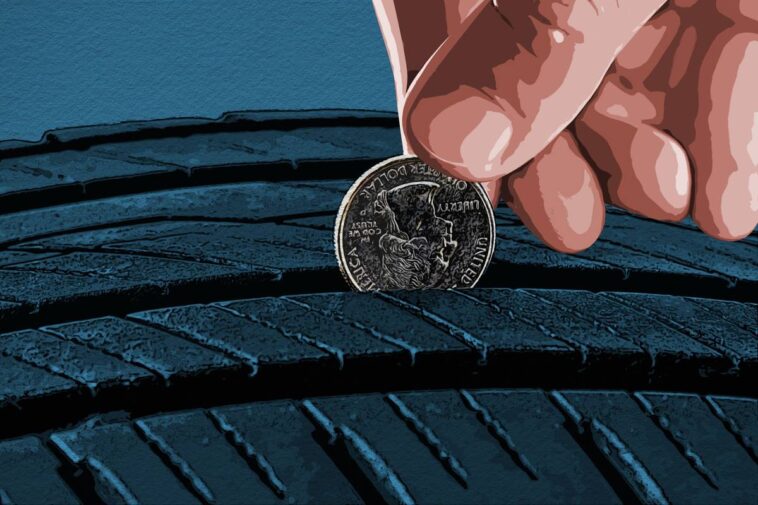Buying a used car can be a cost-effective way to upgrade your vehicle without breaking the bank. However, it’s essential to ensure that every part of the car, especially the tires, is in good condition.
Tires are the vehicle’s only point of contact with the road, making their quality paramount for safety and performance. In this comprehensive guide, we will explore how to check the quality of used car tires, ensuring you make an informed decision.
1. Understanding Tire Wear and Age

When assessing used car tires, the first step is to understand the basics of tire wear and age. They wear down over time due to friction with the road, but excessive or uneven wear can indicate problems. Start by examining the tread depth, which should be more than 2/32 of an inch. Additionally, look for signs of uneven wear, such as bald spots or excessive wear on one side, as these can indicate alignment issues.
The age of a tire is just as critical as its wear. Tires degrade over time, even if they’re not being used. To check the age, look for the DOT code on the sidewall, which includes the week and year of manufacture. Generally, tires older than six years should be replaced, regardless of wear, as the rubber compounds start to break down, increasing the risk of failure.
2. Spotting Potential Tire Issues

Inspect the entire surface of each tire for visible signs of damage. Look for cuts, punctures, or bulges on the tread and sidewalls. These defects can weaken the structure, leading to blowouts or rapid deflation. Also, check for any objects that may be lodged in the tread, as these can lead to punctures or air leaks.
Some problems may not be visible externally. Feel for any irregularities in the surface, such as lumps or uneven hardness, as these could indicate internal damage. If you’re unsure about what you’re feeling, a trusted local provider like Rectangle Auto Parts St. Catharines can offer a professional opinion or assistance in examining the tires more closely. Additionally, ensure the tires are properly inflated according to the manufacturer’s recommendations, as underinflation or overinflation can cause uneven wear and reduce fuel efficiency.
3. Evaluating Tire Performance and Compatibility

Consider the type (all-season, winter, summer) and its performance characteristics (such as grip, handling, and noise level) based on your typical driving conditions. Ensure the used tires are appropriate for the climate and the type of driving you do most often, whether it’s city driving, long highway trips, or off-roading.
Finally, make sure the used tires are the correct size and load rating for your vehicle. Mismatched tires can affect the car’s handling, fuel economy, and safety.
Check the vehicle’s owner manual or the placard on the driver’s side door frame for the recommended size and specifications. By taking these steps, you can ensure that your used tires are safe, reliable, and a good match for your vehicle.
Conclusion
Purchasing used car tires can be a smart, budget-friendly choice, but it’s essential to conduct a thorough inspection to ensure you’re not compromising on safety or performance.
By understanding wear and age, spotting potential issues, and evaluating tire performance and compatibility, you can make an informed decision that benefits both your wallet and your well-being.




